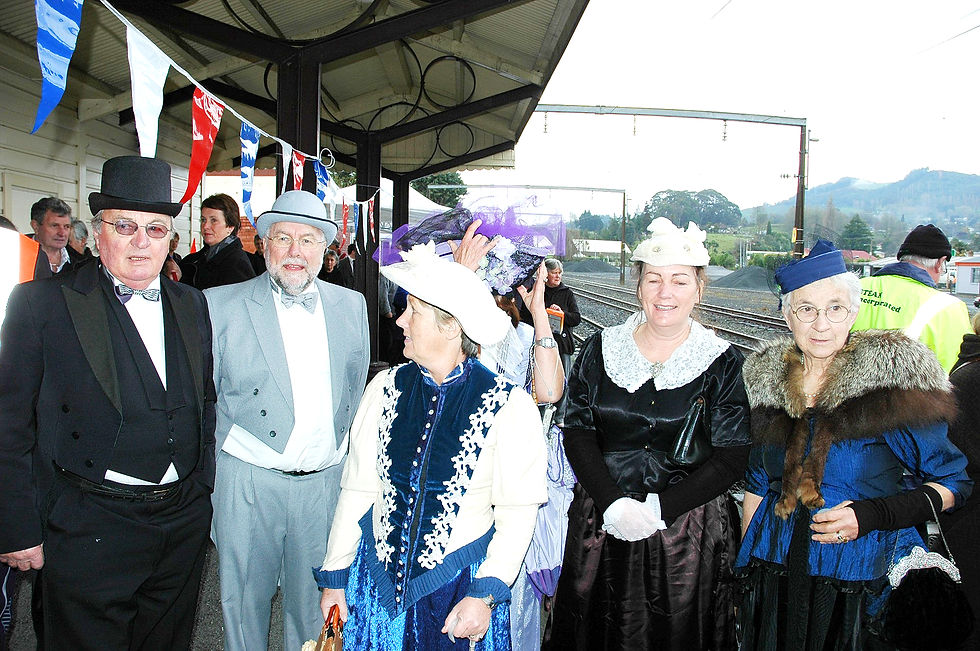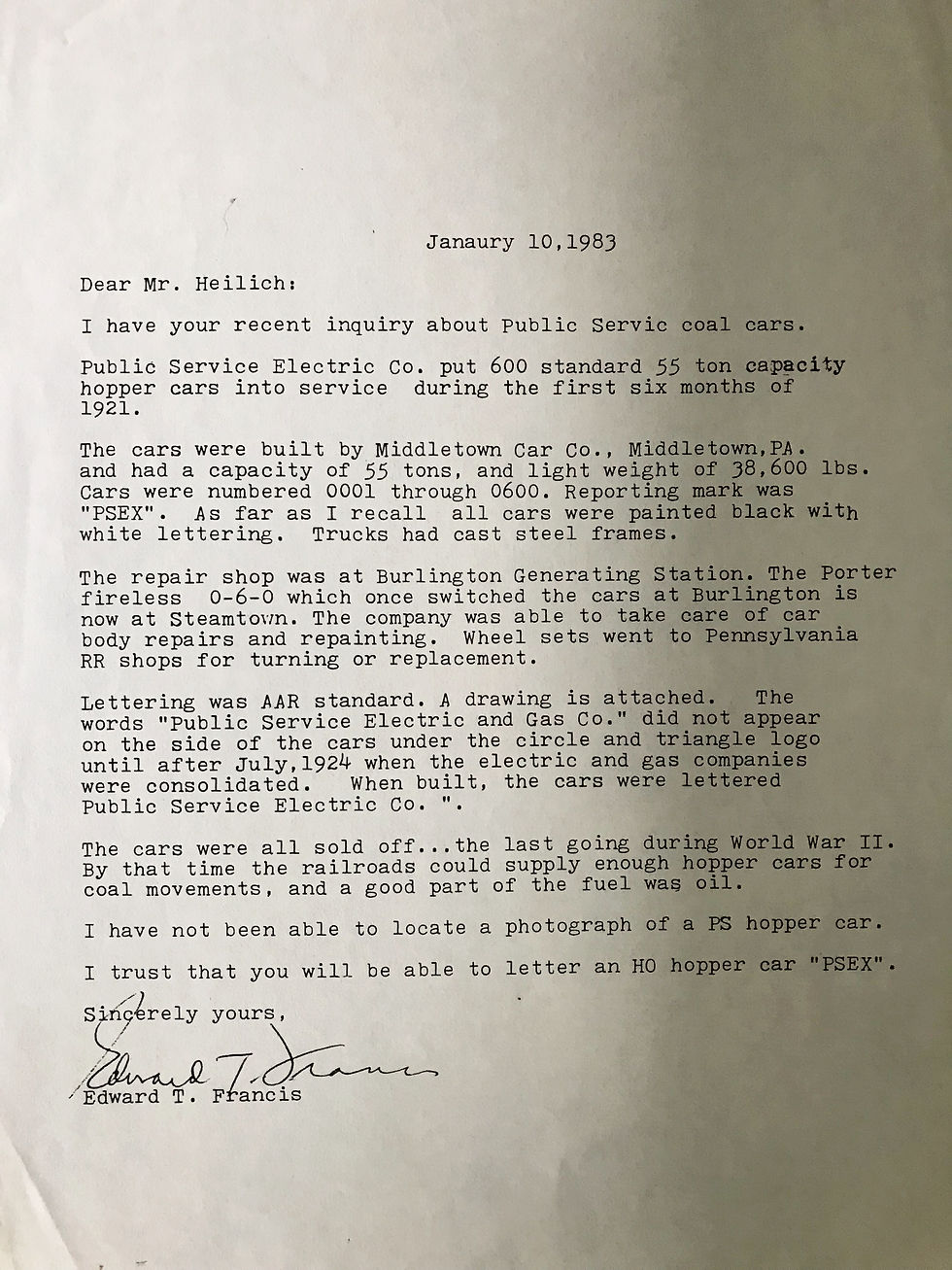Rail Heritage in the South Pacific by Rob Merrifield
- Fred Heilich
- Sep 7
- 6 min read
Bob Merrifield has submitted his second article. This time Bob is providing a look at the early development of New Zealand's railways with British and American influences. He will also touch on the ongoing extensive rail heritage work there.

Photo 1
K 88, Rogers 2454, 1877, as restored to her builder’s colour scheme, hauls a passenger train that reflects the blend of British and American engineering New Zealand railways have developed. Photo: D L A Turner.

Photo 2
The public face of heritage railways: a modern 4-8-2 in full cry.
Railway construction in New Zealand began with uncritical adoption of contemporary British standards. Realisation came that a national network was needed to unite the country through its undeveloped mountainous terrain and in 1869 the Colonial Treasurer, Julius Vogel, travelled the newly opened Union Pacific Railroad. He realised the applicability of the principles behind the achievement of building and opening this railroad and determined to adapt them to New Zealand. An early key move was to recruit Public Works Department Engineer-in -Chief John Carruthers, who had extensive Canadian experience.
From that start came a weaving of US and British practice into a distinctive local practice. Rolling stock and ironwork initially came from England but in 1877 locomotives were bought from Rogers of New Jersey and bogie passenger cars from Gilbert Car Company. Subsequent American steam locomotive purchases were almost entirely from Baldwin Locomotive Works. A distinctive local engineering style developed that took in the most useful features of US and English practice. This can be seen from the detailed design of steam locomotives and latterly, a long period of buying GM and GE diesel-electric mainline locomotives.

Photo 3
Passengers comfortable in a main line excursion train of faithfully restored ex-New Zealand Railways coaches.

Photo 4
A restored second-generation General Motors export model diesel-electric locomotive runs an excursion train in the Manawatu region.

Photo 5
With its well-educated and skilled population, New Zealand has a strong heritage and restoration movement in all forms of transport.
Rail is well represented in this, with a national federation having 70 members, ranging in location from tropical Rarotonga and through the length and breadth of New Zealand. Objectives and presentations of operations vary widely, from main line running, to resurrected branch lines, streetcar operations and museums.
Restored rolling stock comes primarily from New Zealand, though there also are some re-gauged former British Rail coaches and some steam locomotives brought from southern Africa.

Photo 6
Restored 4-6-4T WAB 794 leads her train across a suburban level crossing. A style of crossing very familiar in North America
From 1944 there has been a growing organised rail heritage recording movement that has grown into today’s multiple activities. With the realisation that the days of steam traction were numbered, around 1960, and an increasing number of young men willing to get their hands dirty in collecting rolling stock and other equipment and related records, formal restoration of this for ongoing use became possible. Active restoration had its beginning in 1961, when a small 0-4-0T industrial engine was bought by 16 people – and promptly hired back to the sellers!
Through the ensuing decade as people came together and gained confidence, other discarded rolling stock and equipment began to be collected, with a view to restoring it to operable condition. We were just too late to score one of the first batch of Pacific-type locomotives built, a class of 13 engines built by Baldwin in 1901. The growing competence was recognised by some senior professional railway managers, who in 1974 offered to make available four rakes of redundant passenger coaches at minimal cost, one in each of the principal cities. They had been directed to end general passenger services and recognised a potential value in heritage excursion traffic.
A tourist train operation had already begun using one of those rakes in the southern city of Dunedin, where a spectacular mountain line runs inland through the Taieri Gorge. Half-day and full-day trips are possible, so a thriving tourist market has been built up.

Photo 7
Cycle trail meets tourist railway in Middlemarch: NZ’s pioneering tourist train operation Taieri Gorge Railway caters for tourists ranging from trail cyclists to visiting cruise liner passengers.

Photo 8
From a Federation member’s archives: a draughtsman’s water colour elevation of Wingatui Viaduct on the Taieri Gorge Railway. The viaduct is still in service, but the 1870s train led by a Rogers 2-4-2 was long gone.

Photo 9
A very different tourist railway, at Driving Creek pottery, near Coromandel. This 15 inch gauge line was conceived based on a former central North Island logging tramway that is now a celebrated cycle trail.

Photo 10
Driving Creek Railway uses every alignment device possible to gain altitude, including this double deck viaduct, its levels connected via a spiral. The line climbs 400 ft in 1.7 miles, an average gradient of 4.2%, with sections as steep as 7%.
General main line operations using restored locomotives had to await 1985, and the centenary of starting serious construction of the north-south line through the central North Island. The faultless performance of the two restored steam locomotives on the 850 miles return journey cut the ground from under arguments that their operation could not be safe.
After the success of that 1985 centenary train, the running of restored locomotives on the main line became increasingly acceptable. Nowadays, several Federation member organisations run restored steam, diesel and in one case, electric trains regularly, on main lines and or their own tracks.

Photo 11
Lighting up in the early hours of the morning before a run up the main line.
Photographer not known.

Photo 12
All leads to this: Dave Simpson is quietly checking his schedule while running his 4-8-4 at maximum permitted speed.

Photo 13
Traditional NZ enginemen’s wear: Stephen Brabender has blue denim bib overalls and matching jacket, black shirt and white tie, with a stiff brimmed European-style cap that has his highly prized “NZR” monogramme badge.

Photo 14
Dressing up can be part of the fun of special events: passengers from the 2008 train marking the centenary of opening the 420 mile Wellington-Auckland line, at a wayside stop.

Photo 15
Locomotive AB 608 being re-dedicated and re-named after restoration. She was named in 1925 as a memorial to railwaymen who served and died in World War I.

Photo 16
Engine-minders take care of JA 1271 during an event.

Photo 17
WAB 794 again, at speed in the countryside. The tank wagon holds extra water supplies. Remote controlled pumps can transfer water to the engine’s tanks on the move.

Photo 18
Diesel railcar operators have their place in the sun too: a locally designed 1930s “Standard” railcar picks up passengers on a secondary line.

Photo 19
Our oldest surviving locomotive, “Josephine”, a Fairlie articulated built in England 1872 and now housed in a museum at Dunedin. It was a contemporary of similar locomotives built for the 3 ft gauge Denver & Rio Grande in its early days.

Photo 20
Other Federation members run trains on their own lines. One of several surviving 20 ton 0-6-0Ts built to an 1872 design, running at Western Springs, Auckland. (Photo: W J Horne.)
Other activities are important too: some closed rural stations are maintained by their local communities,

Photo 21
and there is always the vital work of building and maintaining track and other facilities,

Photo 22
A new turnout in process of being built.

Photo 23
A preserved steam crane doing a lift

Photo 24
A track worker’s motor trolley after restoration.
Street cars run in five centres, with two operations being strongly tourist oriented. Work is going on towards building a cable car operation as used formerly in the streets of Dunedin.

Photo 25
A restored streetcar in Christchurch passes historic buildings being repaired.

Photo 26
Not to be forgotten: the freight train and its guard, responsible for safe keeping of his train and for roadside work of switching en route and handling parcels traffic.
For information on rail heritage in New Zealand, go to www.fronz.org.nz
For information on rail history in New Zealand, go to www.railsoc.org.nz
Listed photo No. | Catalogue No. | Subject |
1 | DLAT | K 88 at Tinwald |
2 | 3173 | Ja 1271 at Rata |
3 | 4081 | Steam Inc car interior |
4 | 4551 | Da 1471 at Bunnysthorpe |
5 | 3137 | NZ Railways crest |
6 | 4166 | Wab 794 at Whanganui |
7 | 3852 | Dj and café, Middlemarch |
8 | 3102 | Wingatui Viaduct water colour |
9 | 4318 | Driving Creek Railway base station |
10 | 4354 | Driving Creek Railway double-deck viaduct |
11 | 4802 | Lighting up Ab 608 |
12 | 3508 | Dave Simpson driving Ka 942 |
13 | 3406 | Stephen Brabender driving Wab 794 |
14 | 3467 | Te Kuiti 2008 centenary train |
15 | 4567 | Re-dedication of Ab 608 |
16 | 4573 | Engine minders, Ja 1271 |
17 | 4158 | Wab 794 at Kakariki |
18 | 4707 | Rm 31 at Eketahuna |
19 | 4733 | “Josephine” in Early Settlers Museum, Dunedin |
20 | 4824 | F 180 at Western Springs, Auckland |
21 | 3031 | Shannon station |
22 | 2549 | Building a turnout, Silver Stream Railway |
23 | 3774 | Crane 124 at Silver Stream Railway |
24 | 4802 | Signal maintainer’s motor trolly |
25 | 4542 | Christchurch tramcar 153 on city loop |
26 | 3026 | Demonstration freight train, Silver Stream Railway |
Rob Merrifield, 5 May, 2025.










Comments